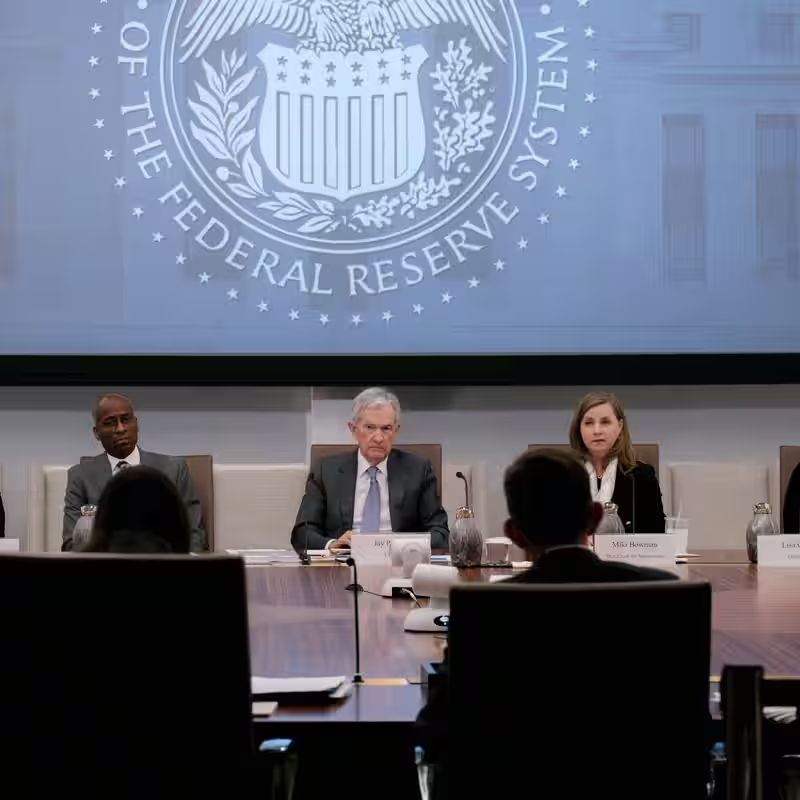The Federal Reserve is hitting the brakes on its effort to shrink its massive balance sheet—a move that could ripple through everything from mortgage rates to your savings account.
Starting December 1, 2025, the central bank will stop reducing its holdings of U.S. Treasuries and mortgage-backed securities, effectively freezing its $7.4 trillion balance sheet. The decision comes amid rising stress in short-term funding markets and growing concern that the Fed may have waited too long to act.
Why Is the Fed Pausing Its Balance Sheet Reduction?
For years, the Fed has been quietly unwinding the emergency asset purchases made during the pandemic and earlier crises—a process known as quantitative tightening. But recent market signals suggest that pulling back too far could dry up liquidity.
In October 2025, the Secured Overnight Financing Rate (SOFR)—a key benchmark for short-term lending—spiked outside the Fed’s target range. Some banks even tapped the Fed’s emergency lending facility, a backstop created after a similar cash crunch in 2019.
“Alerts are going off on a very regular basis right now,” said Lou Crandall, chief economist at Wrightson ICAP. “Boy, are we getting some signs that we shouldn’t be complacent.”
What’s on the Fed’s Balance Sheet?
The Fed’s balance sheet includes:
- U.S. Treasury bonds – purchased to lower long-term interest rates
- Mortgage-backed securities (MBS) – bought to support the housing market
- Bank reserves and reverse repo agreements – tools to manage daily liquidity
At its peak in 2022, the balance sheet swelled to nearly $9 trillion. Since then, the Fed has allowed about $1.6 trillion in assets to roll off—without reinvesting the proceeds.
How This Affects You
While balance sheet policy sounds technical, it has real-world consequences:
Mortgage Rates
When the Fed stops selling MBS, demand for those assets may rise, potentially lowering mortgage rates over time—good news for homebuyers struggling with high borrowing costs.
Savings & CDs
Short-term interest rates may stabilize or dip slightly, which could mean slightly lower yields on high-yield savings accounts and certificates of deposit.
Stock Market
More liquidity in the system often supports risk assets. Investors see the pause as a dovish signal—especially when paired with the Fed’s recent rate cut.
Market Stress: A Warning Sign
| Indicator | Normal Range | October 2025 Spike |
|---|---|---|
| SOFR (Secured Overnight Financing Rate) | Within Fed target | Breached upper limit |
| Bank Use of Fed’s Discount Window | Near zero | Billions borrowed |
| Repo Market Volatility | Low | Elevated for 3+ weeks |
What Comes Next?
Freezing the balance sheet isn’t the end—it’s likely a prelude to expansion. As the economy grows, so do the Fed’s liabilities (like bank reserves). To keep the system functioning smoothly, the Fed may need to start growing its balance sheet again in 2026.
Chair Jerome Powell hinted at this during his October 29 press conference: “At some point, the balance sheet will need to increase to keep pace with the economy.”
A Delicate Balancing Act
This move underscores the Fed’s dual challenge: fighting inflation while avoiding financial instability. With a government shutdown halting key economic data and signs of strain in consumer credit (like rising auto loan defaults), the central bank is navigating foggy terrain.
As Powell put it: “What do you do if you’re driving in the fog? You slow down.”
Sources
The New York Times: The Fed May Soon Stop Reducing Its Debt and Mortgage Bond Holdings




